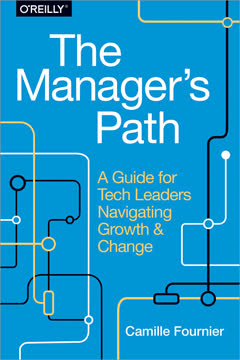Key Takeaways
1. Embrace your public speaking fears and reframe them as motivation
Being nervous is totally normal. Consider what you're juggling: sharing information, entertaining the audience, and guessing (or worrying over) how you're being perceived.
Acknowledge anxiety. Public speaking fears are common and stem from the vulnerability of being in the spotlight. Instead of trying to eliminate these fears, reframe them as a sign that you care deeply about your topic and want to do well. This mindset shift can help you channel nervous energy into productive preparation.
Identify your motivations. Reflect on why you want to speak publicly and what you hope to gain from the experience. Consider both personal and professional benefits, such as growing your network, gaining leadership experience, or teaching others valuable information. Understanding your motivations can help you stay focused and committed throughout the process.
- Common public speaking fears:
- Forgetting your words
- Technical difficulties
- Being judged or challenged
- Physical symptoms of anxiety (sweating, shaking, etc.)
2. Choose a topic that resonates with you and your audience
Your topic doesn't have to be the most inspiring, thought-leadering idea in the universe. 101 talks are a terrific way to gain practice.
Start with what you know. Look to your work experiences, projects, or areas of expertise for potential topics. Even basic "101" level talks can be valuable, as they often apply to a wider audience and are in demand at conferences. Don't discount the power of sharing fundamental knowledge clearly and engagingly.
Consider your audience. Think about who will be attending your talk and what they might want to learn. Tailor your topic to provide value to your specific audience, whether it's introducing a new concept, sharing a case study, or teaching a practical skill.
- Ways to find your topic:
- Examine your biggest work challenges and how you overcame them
- Share your process for solving problems or completing projects
- Teach a skill or tool you use frequently
- Present a case study from your work experience
3. Find the right venue and negotiate your compensation
Compensation and arrangements vary wildly, and it's hard to get figures. Some conferences pay speakers an honorarium or flat fee. Some events cover travel and/or lodging; this coverage could top out at a certain dollar amount or vary depending on distance or other needs like childcare.
Research potential venues. Look for speaking opportunities that align with your goals and comfort level. Consider factors such as audience size, event reputation, and level of speaker support. Explore options ranging from company lunch-and-learns to large industry conferences.
Advocate for fair compensation. Don't be afraid to ask about and negotiate compensation for your time and expertise. This may include speaker fees, travel expenses, lodging, or other accommodations. Remember that your work has value, and it's appropriate to be compensated for it.
- Types of speaking venues:
- Company lunch-and-learns
- Local meetups
- Industry conferences (single-track or multi-track)
- Compensation considerations:
- Speaker fees or honorariums
- Travel and lodging expenses
- Conference ticket or admission
- Childcare or other necessary accommodations
4. Craft a compelling narrative structure for your presentation
Creating a solid structure for your content is the best way to guide your audience through your topic—structure helps set expectations for what's next, strengthen your arguments, and keep folks more engaged.
Tell a story. Organize your presentation into a narrative that guides your audience through your topic. This structure helps maintain engagement and makes your points more memorable. Consider using a framework that includes elements such as setting the landscape, analyzing the problem, presenting solutions, and discussing broader implications.
Focus on takeaways. Ensure that your presentation provides clear, actionable takeaways for your audience. Think about what you want them to learn, feel, or do differently after hearing your talk. Structure your content to support these key messages and make them easy to remember and apply.
- Example narrative structure:
- Landscape: What exists
- Analysis: What you want to highlight
- Problem: The core issue
- Options: Possible solutions
- Solution: The best option and how it works
- Reasons: Why the audience should believe you
- Bigger idea: Why this concept matters broadly
5. Design accessible and inclusive slides to support your message
Pay attention to typefaces and colors—too many of either can distract your audience. Use color accessibility tools, like Lea Verou's Contrast Ratio, to verify your content is readable by people with color blindness or other visual impairments.
Prioritize readability. Design your slides with accessibility in mind. Use high-contrast color combinations, legible fonts, and appropriate text sizes to ensure your content is easily readable from all parts of the room. Consider using tools to check color contrast and readability.
Be inclusive in your content. Carefully review your slides for inclusivity in language, imagery, and examples. Avoid stereotypes, use diverse representations, and be mindful of cultural references that may not translate globally. This attention to detail helps ensure your message resonates with a broader audience.
- Slide design tips:
- Use consistent fonts and colors
- Limit text to key points or memorable phrases
- Incorporate relevant images or diagrams
- Test readability from a distance
- Inclusivity considerations:
- Use gender-neutral language
- Include diverse representation in images and examples
- Avoid cultural references that may not be universally understood
6. Practice your talk and gather feedback from trusted sources
Practicing by yourself or with a trusted group of listeners will enable you to get feedback and test out approaches to Q&A.
Rehearse alone and with others. Start by practicing your talk on your own to get comfortable with the content and timing. Then, present to a small group of trusted colleagues or friends who can provide constructive feedback. This process helps you refine your delivery and identify areas for improvement.
Seek specific feedback. When practicing with others, ask for targeted feedback on different aspects of your presentation, such as content clarity, slide design, delivery style, and audience engagement. Provide your listeners with specific questions to consider as they watch your talk.
- Practice techniques:
- Record yourself and review the video
- Present in an empty room to simulate stage conditions
- Time your talk to ensure you stay within your allotted time
- Feedback areas to focus on:
- Content clarity and organization
- Slide design and visual aids
- Delivery style (pace, tone, body language)
- Audience engagement and interaction
7. Prepare thoroughly for the day of your presentation
Whenever possible, scout out where you'll be speaking. Get yourself acquainted with the space and setup (no need to run through your talk—you've already done the prep!).
Familiarize yourself with the venue. If possible, visit the speaking location in advance to get comfortable with the space. Check the stage setup, audio-visual equipment, and audience seating. This preparation can help reduce anxiety and allow you to focus on your delivery.
Create a pre-talk checklist. Develop a list of items to prepare and check before your presentation. This may include technical aspects like testing your slides and microphone, as well as personal preparations like choosing comfortable attire and having water available.
- Venue preparation:
- Test audio-visual equipment
- Adjust lighting if necessary
- Familiarize yourself with the microphone setup
- Personal preparation:
- Choose comfortable, appropriate attire
- Bring necessary backups (slides, adapters, etc.)
- Plan for meals and hydration before speaking
8. Deliver your talk with confidence and handle Q&A effectively
You get to determine your Q&A and how it goes; you have a lot of power to reframe questions, move on from weird ones, and do whatever you can to help the audience continue to learn.
Project confidence. Remember that your audience wants you to succeed and is interested in your message. Focus on delivering your content clearly and passionately, rather than worrying about small mistakes or audience reactions. If you stumble, take a breath and continue.
Manage Q&A strategically. Approach the Q&A session as an opportunity to further engage your audience and clarify key points. Be prepared to reframe or redirect questions to keep the discussion relevant and valuable for everyone. Don't be afraid to admit when you don't know something – offer to follow up later if necessary.
- Confidence-boosting techniques:
- Use power poses before going on stage
- Focus on your breathing to stay calm
- Remind yourself of your preparation and expertise
- Q&A strategies:
- Repeat questions to ensure everyone hears them
- Reframe unclear or off-topic questions
- Have a few prepared answers for common questions
9. Collect feedback and reflect on your performance to improve
Gather external sources of feedback to check how well your content resonated with the audience and how you might improve your presentation for next time.
Seek diverse feedback. After your talk, gather feedback from multiple sources to get a comprehensive understanding of your performance. This may include audience reactions, social media mentions, event organizer feedback, and your own self-reflection.
Analyze and apply insights. Review the feedback you receive and look for patterns or recurring themes. Use this information to identify areas for improvement in your content, delivery, or overall presentation style. Apply these insights to refine your talk for future presentations or to develop new speaking topics.
- Feedback sources:
- Social media mentions and quotes
- Event organizer surveys or comments
- Personal reflections on your experience
- Areas for improvement:
- Content clarity and relevance
- Slide design and visual aids
- Delivery style and audience engagement
- Q&A handling and interaction
Last updated:
Review Summary
Demystifying Public Speaking receives mostly positive reviews, praised for its practical advice and actionable tips. Readers appreciate its concise format, covering the entire process from topic selection to delivery. Many find it helpful for both beginners and experienced speakers, particularly in the tech industry. The book is commended for addressing inclusiveness and self-care. Some reviewers note that while not groundbreaking, it serves as a useful reminder and reference. A few mention that it didn't provide much new information for those already familiar with public speaking concepts.
A Book Apart Series Series
Similar Books






Download PDF
Download EPUB
.epub digital book format is ideal for reading ebooks on phones, tablets, and e-readers.








